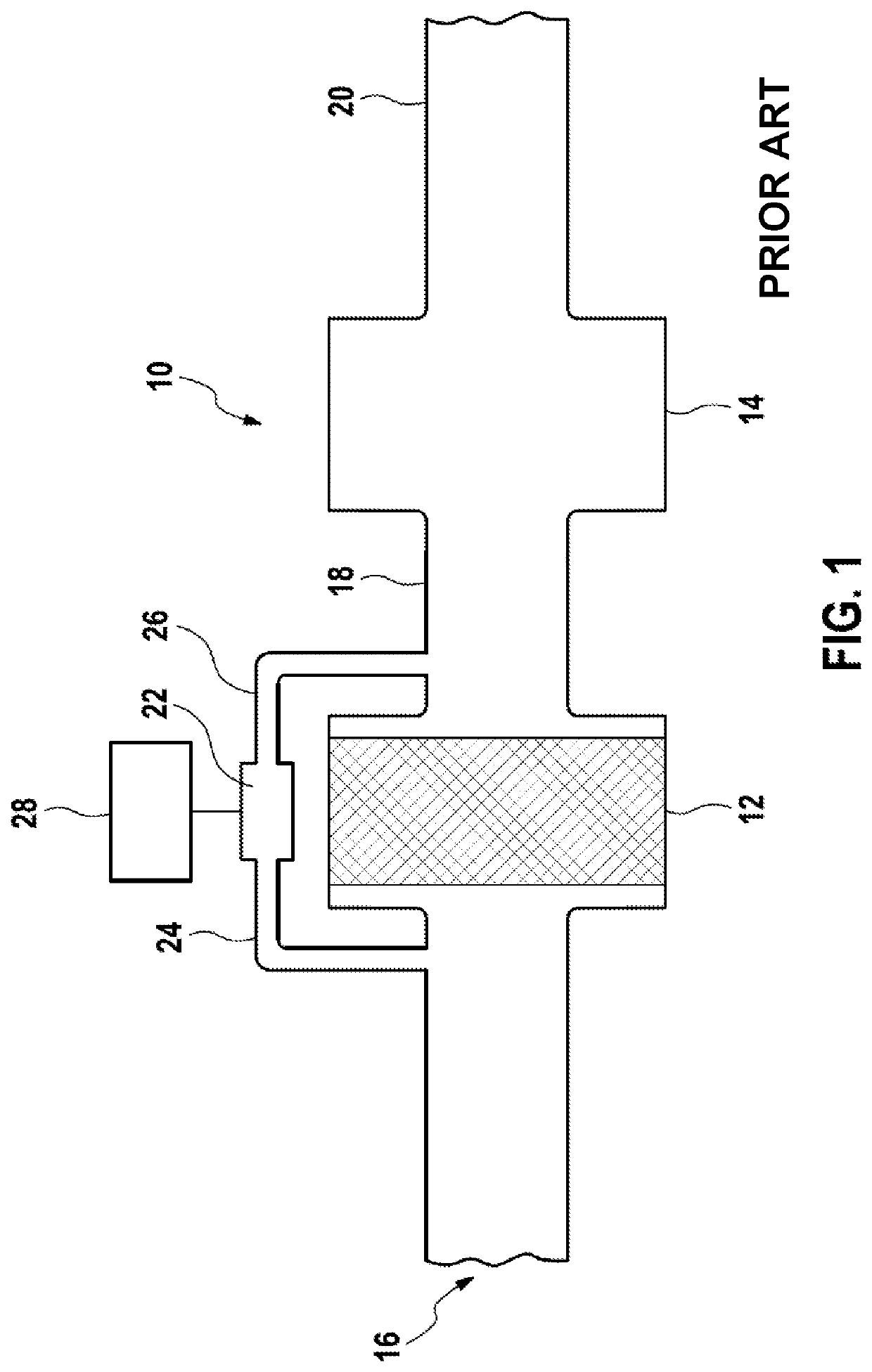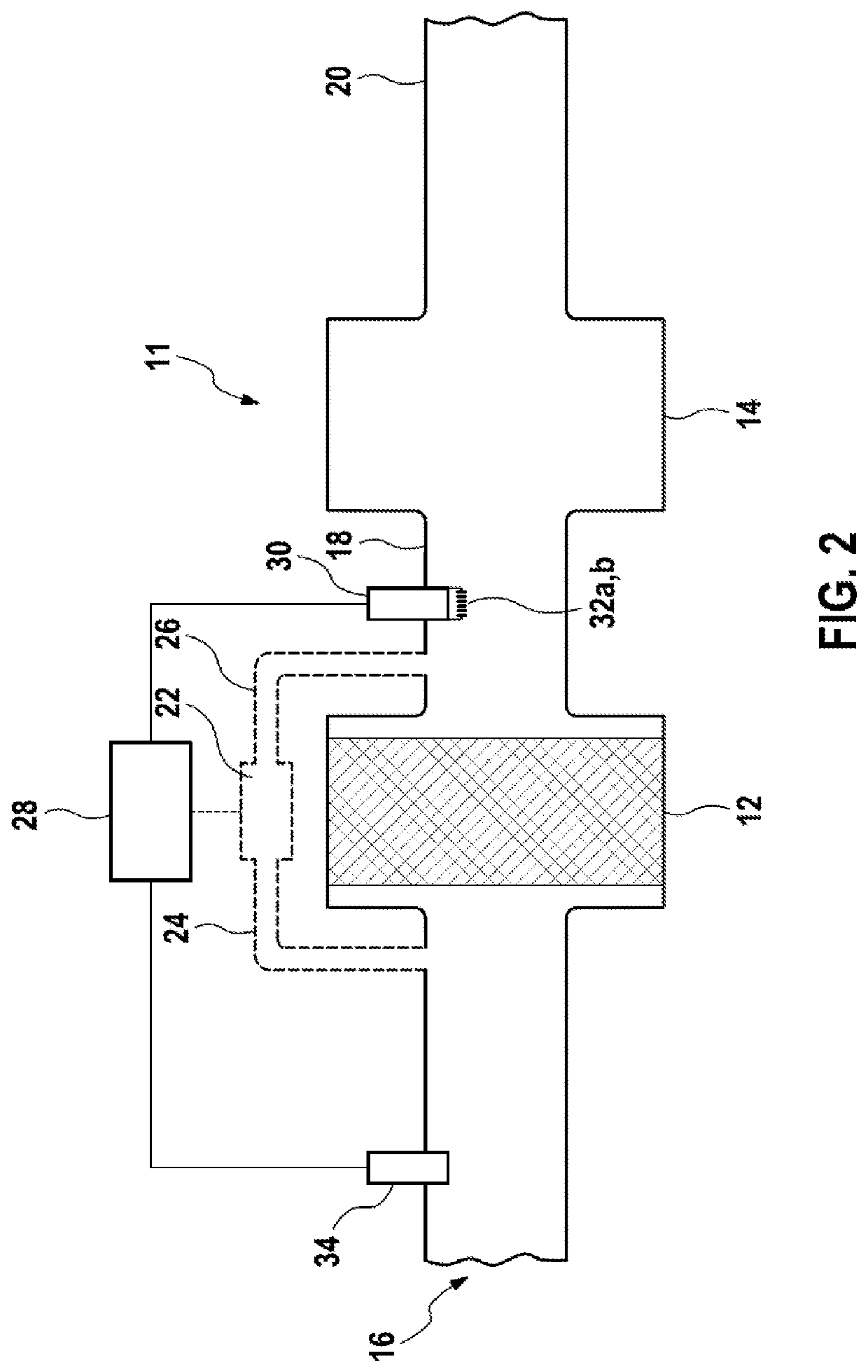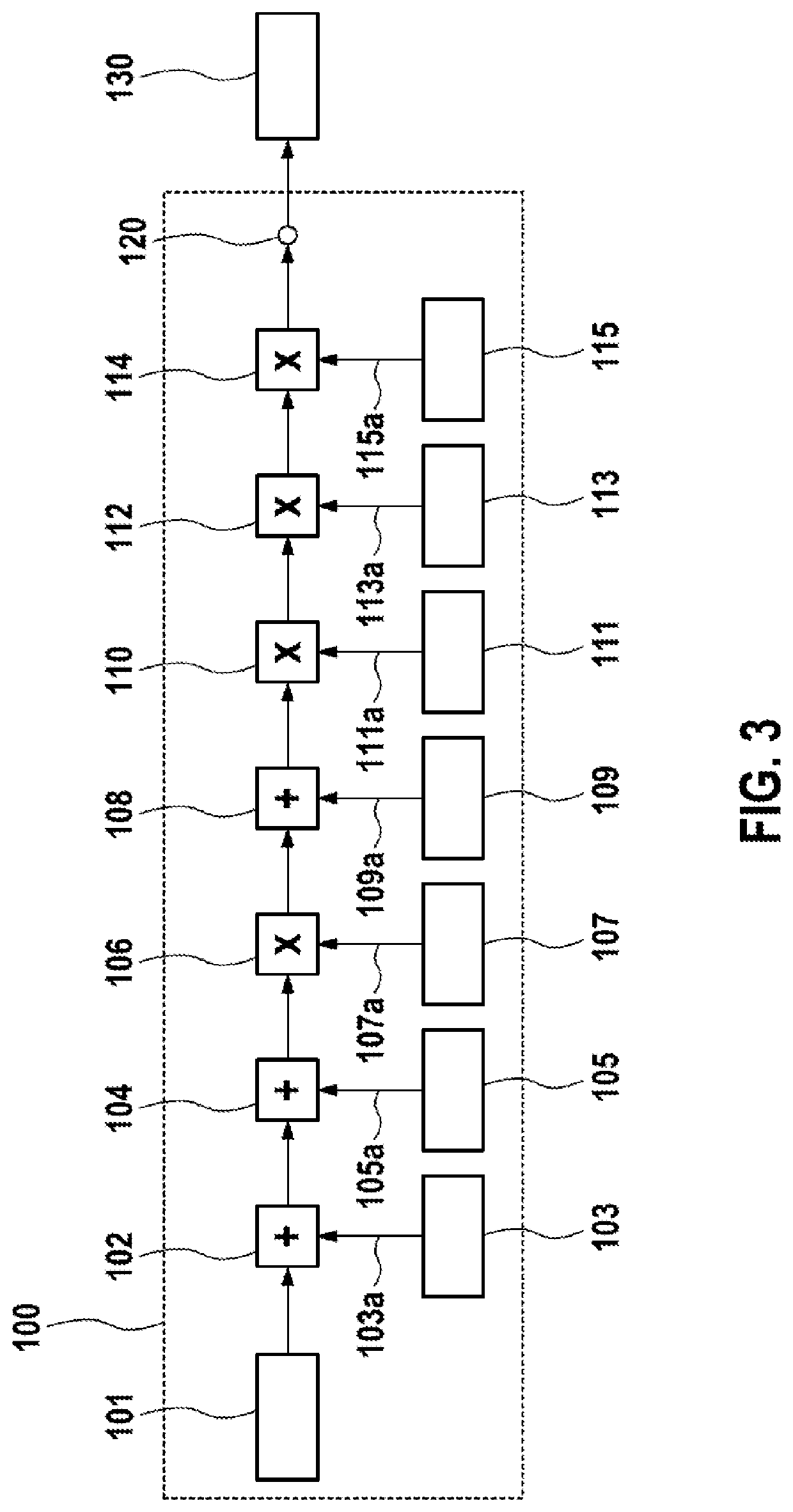Method and control device for monitoring the function of a particulate filter
a technology of particulate filter and control device, which is applied in the direction of electrical control, machine/engine, separation process, etc., can solve the problem of not being able to directly measure the soot concentration in the exhaust gas, and achieve the effect of avoiding the risk of data loss due to the conversion steps, reducing the number of conversion steps, and simplifying the diagnostics of the functionality of the diesel particulate filter
- Summary
- Abstract
- Description
- Claims
- Application Information
AI Technical Summary
Benefits of technology
Problems solved by technology
Method used
Image
Examples
Embodiment Construction
[0020]The prior art is soot simulation on the basis of soot particle mass flows by various techniques. The drawback to this method is that it requires a double converting of a concentration, which is typically determined by mensuration, into a mass flow, obtained on the basis of a model, and back to a concentration, which is the basis of a diagnostic function for assessing whether the DPF is good or defective. This is costly in computing time and carries the risk of data loss during the conversions.
[0021]FIG. 1 shows schematically an exhaust gas system 10 with a particulate filter 12 and a muffler 14. Exhaust gases from an internal combustion engine (not shown) are taken through an exhaust gas supply 16 to the particulate filter 12, flow through the particulate filter 12, then flow through an exhaust gas connecting pipe 18, then through the muffler 14, and are then put out to the surroundings through the exhaust gas discharge 20. In modern internal combustion engines, the combustion...
PUM
| Property | Measurement | Unit |
|---|---|---|
| concentration | aaaaa | aaaaa |
| soot concentration model | aaaaa | aaaaa |
| rotational speed | aaaaa | aaaaa |
Abstract
Description
Claims
Application Information
 Login to View More
Login to View More - R&D
- Intellectual Property
- Life Sciences
- Materials
- Tech Scout
- Unparalleled Data Quality
- Higher Quality Content
- 60% Fewer Hallucinations
Browse by: Latest US Patents, China's latest patents, Technical Efficacy Thesaurus, Application Domain, Technology Topic, Popular Technical Reports.
© 2025 PatSnap. All rights reserved.Legal|Privacy policy|Modern Slavery Act Transparency Statement|Sitemap|About US| Contact US: help@patsnap.com



